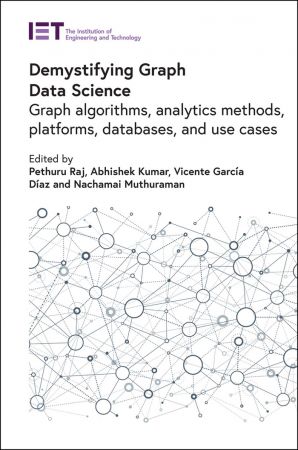
English | 2022 | ISBN: 978-1839534881 | 415 pages | True PDF EPUB | 38.4 MB
With the growing maturity and stability of digitization and edge technologies, vast numbers of digital entities, connected devices, and microservices interact purposefully to create huge sets of poly-structured digital data. Corporations are continuously seeking fresh ways to use their data to drive business innovations and disruptions to bring in real digital transformation. Data science (DS) is proving to be the one-stop solution for simplifying the process of knowledge discovery and dissemination out of massive amounts of multi-structured data.
Supported by query languages, databases, algorithms, platforms, analytics methods and machine and deep learning (ML and DL) algorithms, graphs are now emerging as a new data structure for optimally representing a variety of data and their intimate relationships.
Compared to traditional analytics methods, the connectedness of data points in graph analytics facilitates the identification of clusters of related data points based on levels of influence, association, interaction frequency and probability. Graph analytics is being empowered through a host of path-breaking analytics techniques to explore and pinpoint beneficial relationships between different entities such as organizations, people and transactions. This edited book aims to explain the various aspects and importance of graph data science. The authors from both academia and industry cover algorithms, analytics methods, platforms and databases that are intrinsically capable of creating business value by intelligently leveraging connected data.
This book will be a valuable reference for ICTs industry and academic researchers, scientists and engineers, and lecturers and advanced students in the fields of data analytics, data science, cloud/fog/edge architecture, internet of things, artificial intelligence/machine and deep learning, and related fields of applications. It will also be of interest to analytics professionals in industry and IT operations teams.



